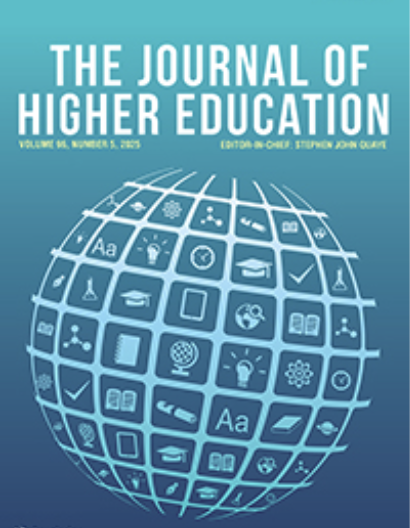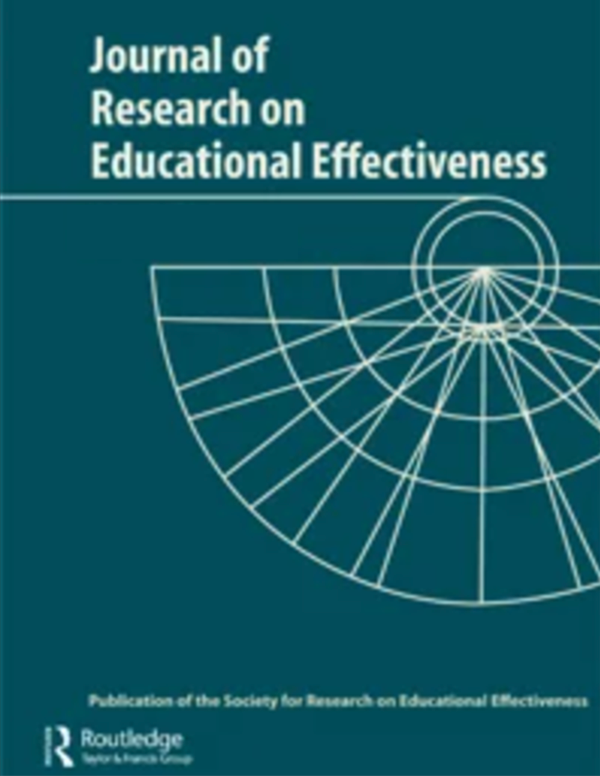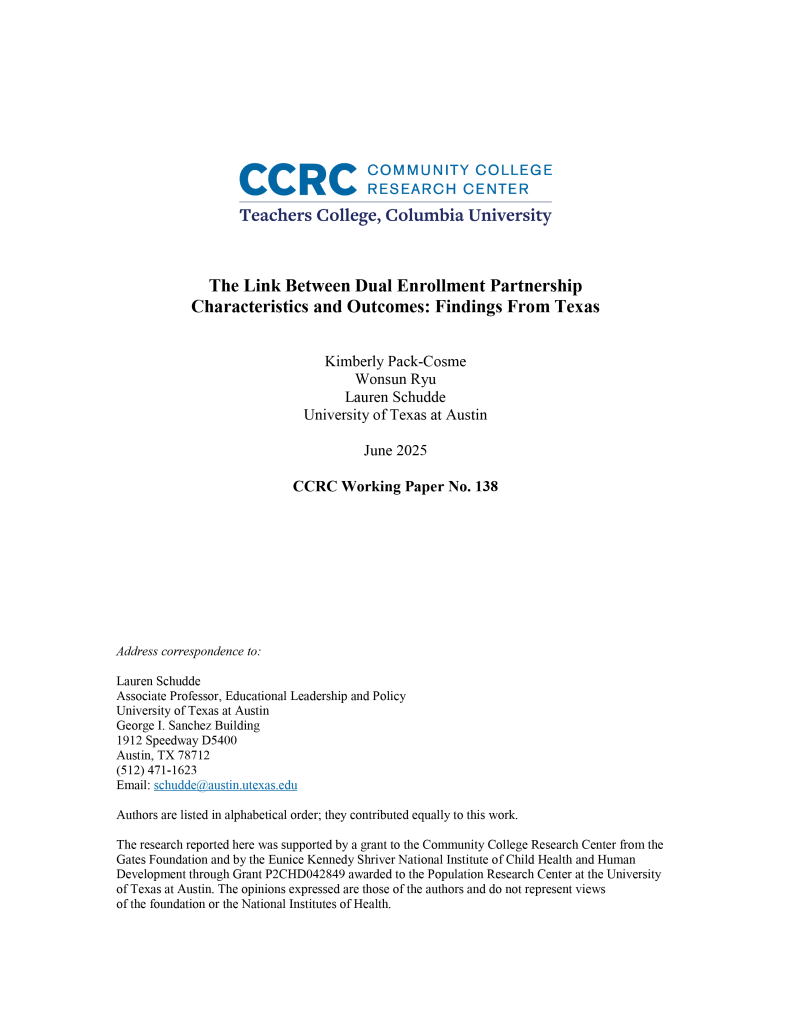From Course to Skill: Evaluating Large Language Model Performance in Curricular Analytics

In this AIED conference paper, the authors evaluate four text alignment strategies based on large language learning models (LLMs) or traditional natural language processing (NLP) for skill extraction, a core task in curricular analytics.
The Impact of Dual Enrollment on College Application Choice and Admission Success

Using a regression discontinuity approach and data from two cohorts of students in one state, this paper examines the effect of taking dual enrollment credits on the number of in-state public colleges students apply and are admitted to and the selectivity of those colleges.
“Waiving” Goodbye to Placement Testing: Broadening the Benefits of Dual Enrollment Through Statewide Policy

Using interview data from program leaders and statewide student data, this paper examines the implementation and estimates the effects of Ohio’s Innovative Programs, a policy aimed at expanding access to dual enrollment for underserved high school students.
The Long-Term Effectiveness of Multiple Measures Assessment: Evidence From a Randomized Controlled Trial

Using nine terms of outcomes data, this CAPR working paper presents findings from an impact study on multiple measures assessment at seven State University of New York (SUNY) community colleges.
The Link Between Dual Enrollment Partnership Characteristics and Outcomes: Findings From Texas

This working paper describes dual enrollment (DE) high school–college partnerships and estimates which DE structures and contexts predict aggregate DE course completion, college enrollment, and degree attainment.
